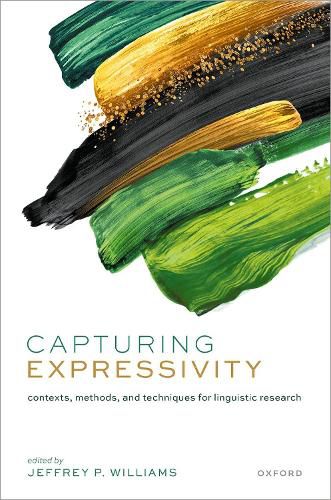Readings Newsletter
Become a Readings Member to make your shopping experience even easier.
Sign in or sign up for free!
You’re not far away from qualifying for FREE standard shipping within Australia
You’ve qualified for FREE standard shipping within Australia
The cart is loading…






This volume investigates the methods and techniques used to investigate expressivity, a term used to describe linguistic phenomena that serve an expressive function and deliver sensory information about an event, entity, or other culturally-determined category through a set of grammatical resources. The study of expressivity has gradually grown in stature over the last decade in particular; while there are much earlier accounts of expressivity, particularly within descriptive traditions of African, East Asian, and European linguistics, modern linguistic theory has been rather slow to incorporate information regarding these forms and processes into contemporary dialogue. In many earlier grammars, discussion of expressive elements such as ideophones and mimetics was relegated to footnotes at best. This is no longer the case in modern linguistic documentation and description, necessitating new fieldwork methods and analytical tools. The chapters in this book represent a new stage in the history of the study of expressivity: they explore a variety of different expressive items from a wide range of languages, focusing on the question of how to 'capture' expressivity in language and culture.
$9.00 standard shipping within Australia
FREE standard shipping within Australia for orders over $100.00
Express & International shipping calculated at checkout
This volume investigates the methods and techniques used to investigate expressivity, a term used to describe linguistic phenomena that serve an expressive function and deliver sensory information about an event, entity, or other culturally-determined category through a set of grammatical resources. The study of expressivity has gradually grown in stature over the last decade in particular; while there are much earlier accounts of expressivity, particularly within descriptive traditions of African, East Asian, and European linguistics, modern linguistic theory has been rather slow to incorporate information regarding these forms and processes into contemporary dialogue. In many earlier grammars, discussion of expressive elements such as ideophones and mimetics was relegated to footnotes at best. This is no longer the case in modern linguistic documentation and description, necessitating new fieldwork methods and analytical tools. The chapters in this book represent a new stage in the history of the study of expressivity: they explore a variety of different expressive items from a wide range of languages, focusing on the question of how to 'capture' expressivity in language and culture.